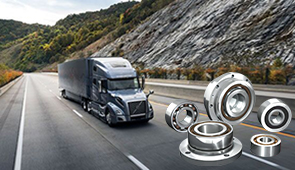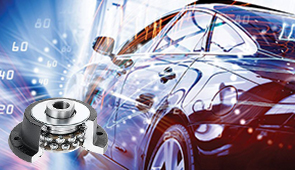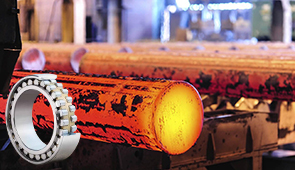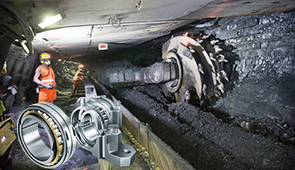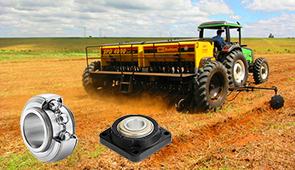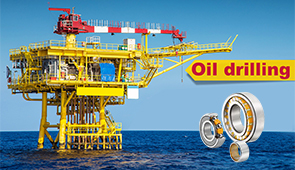Ultimate Guide to Oil-Lubricated Precision Bearings: Maximizing Performance
Precision bearings are the unsung heroes behind the smooth operation of countless mechanical systems, from high-speed turbines to advanced robotics. Among the various lubrication methods available, oil-lubricated precision bearings stand out for their ability to enhance performance, reduce friction, and extend the operational life of machinery. This comprehensive guide dives into the intricacies of oil-lubricated precision bearings, exploring their design, function, and maintenance best practices. Whether you’re an engineer aiming to improve system efficiency or a technician seeking to minimize downtime, this article will provide you with actionable insights and strategies to optimize performance.
What are the advantages of oil lubrication for bearings?

How oil lubrication reduces friction in rolling element bearings
Oil lubrication is critical for friction reduction and wear management within rolling element bearings and helps maintain the efficiency and extend the life of the machinery. When oil is provided, it generates a bearing almost full between the rolling elements and raceways, which prevents contact with metal surfaces that would be in contact with each other. Friction is reduced by reducing Asperity interactions, which are the contact between rough peaks on surfaces.
Oil lubrication is very dependent on the viscosity, shear strength, and thermal characteristics of the oil. The viscosity of the oil must be maintained or set at the right level so that it can decrease friction by having enough film thickness at various loads and speeds, and also having good conductivity to remove heat produced during operation, since varying levels of temperature are emitted during the operation of the oil. Other formulations, such as synthetic oils and wear-resistant oil additives or anti-oxidants, offer better lubrication for rolling element bearings since they do not get damaged under high stress or severe conditions.
Basic oil lubrication methods such as oil grade selection, lubrication interval timetables, and cleanliness maintenance can greatly enhance the performance level of the bearing in use. Reports show that insufficient bearing lubrication is one of the major causes of bearing failure accounting for almost 40% of the cases which shows the importance and the need for good oil products that must be accompanied with other measurements that needs to be followed.
Benefits of oil film formation on bearing surfaces
The formation of an oil film on bearing surfaces is vital in decreasing both friction and wear during operations. This protective “lubricating layer” encases the surfaces of bearings so that metals are prevented from rubbing against each other; therefore, the chances of scuffing and surface damage are significantly lowered. The hydrodynamic oil film also aids in load distribution throughout the bearing surface, which reduces high stress points that may cause material degradation or micro-cracking.
Research has shown that with proper maintenance, a bearing oil film can achieve a lifespan increase of 40% under ideal circumstances. This increase is due to the reduced temperatures and better heat dissipation brought about by lubrication. Furthermore, the oil film is important in preventing contamination as it captures tiny particles and hinders their movement into crucial contact areas that, if affected, would worsen wear and tear or result in pitting.
In conjunction with synthetic and semi-synthetic modern lubricants that are designed to retain viscosity when exposed to extreme temperatures as well as have better shear stability, the advantages of an oil film system are more sited. When under the control of sophisticated systems such as real-time oil condition evaluation, the efficiency and dependability of bearings in high-performance machinery can be enhanced.
Why is oil lubricant preferred for high-speed applications
Because of their capacity to decrease friction and dissipate heat, oil lubricants are frequently used in high-speed settings. Parts have shear forces and temperatures that are rotationally high, which can dangerous the performance of grease-based lubricants. Unlike other lubricants, oil lubricants are formulated to withstand these conditions g forensically engineered, ensuring viscosity retention and uninterrupted lubrication.
Also, modern monitoring and distribution systems can be coupled with oil lubrication systems. For example, circulating oil systems maintain a constant supply of lubricant to wear components, mitigating overheating and reducing wear and tear. Further advancements in synthetic oils have improved their oxidative stability, which translates to longer service intervals and reliability under severe conditions.
Cooling is another key benefit oil offers. While operating, oil soaks up heat and removes it from crucial components, helps keep the right temperature for working conditions, and extends the lifespan of the equipment. Recently developed oil formulations carry additives that strengthen the anti-wear of the oil, improve corrosion resistance, and lower foaming, making oil key in high-speed machinery, including turbines, compressors, and car engines.
In high-speed applications, reliability and efficiency are achieved with the use of oil lubricants that are paired with modern telemetry and monitoring systems.
How to select the right type of lubricant for bearings?
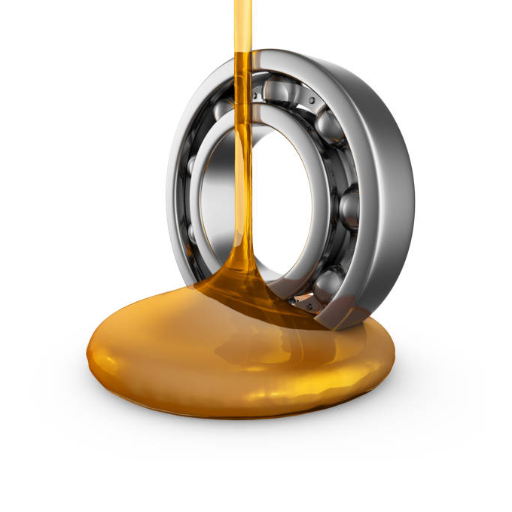
Understanding oil viscosity requirements for different bearing applications
The importance of oil viscosity concerning the performance of bearings in different industrial applications is critical. Viscosity refers to the flowing resistance of oil, and its selection is bound to the speed, temperature, and load of the bearing system. For low-speed, high-load applications, higher viscosity oil is necessary to support adequate lubrication while reducing metal-to-metal contact and wear. However, lower viscosity oils are necessary for high-speed applications to decrease frictional drag and heat generation.
Thermal dynamics also affect viscosity selection because oil tends to thin and thicken at higher and lower temperatures, respectively. For systems that undergo a range of variable temperatures, the lubricants suggested are stable anti-gear oils with a high viscosity index (VI).
Additionally, changes in lubrication technologies and fluid dynamics have made modeling dynamic viscosity in dynamic conditions easier which helps engineer in selecting the best performing lubricant. Maximized efficiency and longevity in bearings is achieved by consideration of the bearing material compatibility and operational factors like the level of contamination and environmental control.
Comparing base oil properties for various operating conditions
Base oils, the key component of lubricants, are subdivided into five different groups: mineral oils, including groups I, II, and III, synthetic oils classified under group IV, and other subcategories such as esters or silicones known as group V. Each of them has at least one advantage that fulfills different operational needs. For example, Group I oils have moderate oxidation stability but are applicable only with low to medium temperature ranges for cost effectiveness because they come from solvent refining. On the contrary, Group II and III oils, which use hydrocracking refinement, have better thermal and oxidative stability, which allows using them in high-temperature regions for longer periods and results in longer-lasting lubricants.
Synthetic oils like polyalphaolefins in Group IV, have the best viscosity index, low temperature fluidity, and thermal stability. This makes them preferable to use in the most harsh operating conditions like high speed machinery or sub-zero environments. Moreover, performance characteristics in high temperature settings ester and other Group V oils are used to augment lubricity and reduce deposit formation.
These approaches are complemented with advanced lab testing and field trials that provide real-life data on wear rates, film thickness, and viscosity retention. Every approach, as detailed above, guarantees exact precision between the properties of the lubricant used and the requirements of the specific pieces of machinery to be worked on. The precise selection of the components alongside the operating temperature and level of speed of the equipment ensures optimal performance and durability of the equipment in question.
When to choose oil versus grease lubrication
The use of oil and grease lubricants will depend on the specific maintenance requirements, application conditions, and environmental setting. Oil lubrication is preferred for systems that require fluidity and high heat dissipation, such as high-speed machinery or equipment with close tolerances. The described category of machinery requires a high degree of motion fluidity, and in turn, oils help reduce friction, wear, and tear during rotation or sliding. The sliding or rotating equipment is supported using splash or circulating lubrication systems. Furthermore, oils allow for the removal of contaminants and so are best suited for applications exposed to fine dust or organisms when filters are fitted.
Grease is typically used when long-lasting lubrication is required in operating equipment subjected to moderate speeds and high loads for prolonged durations. The ability of grease to cling makes it suitable for bearing, gear, and joint components that experience some shock loading or intermittent operations. Unlike oil, grease can create a seal that aids in protecting internal parts from dirt, dust, water, and other contaminants, thus making it suitable for outdoor equipment. Also, grease is not used as frequently as thick oil, increases service intervals, and reduces maintenance tasks in hard-to-access systems.
After comprehensive consideration of all these factors, the professionals can choose the most appropriate lubrication strategy that guarantees machine dependability, reduces wear, and enhances capabilities under different varying operational settings.
What are the different methods of oil lubrication for bearings?
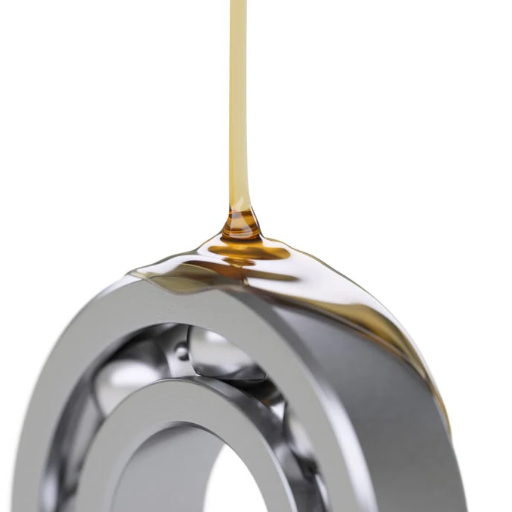
Oil bath and oil circulation lubrication systems
Oil bath lubrication is probably the simplest and most popular way to service bearings, especially for bearing workings with moderately lower speed and load. In this system, a part of the bearing is dipped in a lubricant reservoir, and the rotating parts scoop oil, conveying it as they move. Thus, the lubrication is maintained continuously. This method is simple and effective cost-wise, but does require some monitoring, inspection, and possible maintenance in regards to the oil level, oil cleanliness, or any other contaminants that may be present.
Oil circulation systems, in comparison, are more advanced and geared towards powering sophisticated applications. The entire process of circulating oil is executed continuously, from pumping it through the bearings to collecting it in a reservoir and re-circulating it after filtration. Oil circulation systems are best for high speed machinery and heavily loaded bearings where oil temperature and contamination control is vital. For turbine bearing and industrial gearboxes, this method improves operation by controlling extreme temperature and decreasing the odds of contaminants.
The development of sensors and monitoring equipment has enhanced these lubrication systems. Nowadays, oil viscosity, pressure, and flow rates can be monitored in real time in most systems. These advancements utilize predictive maintenance strategies to avert downtime by identifying issues before failure. In any case, the choice between oil bath and oil circulation systems should take into consideration operational conditions, characteristics of the machinery, maintenance, and serviceable options.
Oil-air lubrication and mist lubrication techniques
Spray lubrication and oil-air lubrication are two sophisticated means aimed at improving lubrication in high-speed or precision machines. These systems utilize very small amounts of oil, which is either sprayed or injected into the rail to ensure proper lubrication of the targeted parts, which include bearings, spindles, or gears.
Oil-air lubrication, also known as MQL (minimum quantity lubrication), feeds oil droplets suspended in air at high pressure. This technique enables lube distribution to be balanced because surfaces with lube will only have the minimum amount of oil that is required. This improves reduction of lubricant usage, heat, and residue as compared to previous techniques.
Mist lubrication is particularly effective in environments that demand exposed surfaces difficult to access. Advanced generator shafts are examples of modern mist lubrication systems. These are equipped with proper misters that guarantee complete mist coverage irrespective of the presence of oily residues that may block other parts of the machinery.
Both procedures have been enhanced by the development of smart sensors that supervise the lubrication flow rates, pressures, and particle distribution in real-time. These integrations enable operators to manage and avoid problems related to over lubrication, oil starvation,and under-delivering oil, and enhance the life of the equipment while reducing maintenance costs and expenditures. Often, the choice of one over another of oil-air vs. mist lubrication depends on the design of the machinery, important operational features, and the specific needs of the industry.
Precision bearings and their specific oil lubrication requirements
Due to high-speed requirements and critical tolerances, precision bearings need carefully designed lubrication systems that support functionality and lifespan. The lubrication process is geared more towards minimizing friction, dissipating heat, and avoiding contamination of the moving components in the bearing assembly. For these specific applications, oil lubrication is preferred because it has better thermal conductivity and can withstand relatively higher speeds than grease. The viscosity of the oil is also very important and requires tailoring to the operational temperature, the speed at which the bearings rotate, and the load on the bearings.
Very often, high-performing oils are used along with advanced additives like anti-wear agents, oxidation inhibitors, and viscosity index enhancers. Such additives improve the protective action of the oil and reduce the wear on it during extreme operating conditions. Delivery systems are no less important, especially with oil-air lubrication systems that provide accurate dosing of lubricating oil and greatly reduce waste. Such systems do not over-supply oil, thus avoiding energy losses caused by churning and reducing downtime.
Apart from that, nowadays, oil and temperature and vibration sensors are incorporated into lubrication management systems, condition monitoring technologies. These systems improve vent effectiveness of ventilation systems by enabling predictive maintenance that drastically reduces the chance of bearing failure.
What are common bearing failures related to oil lubrication?
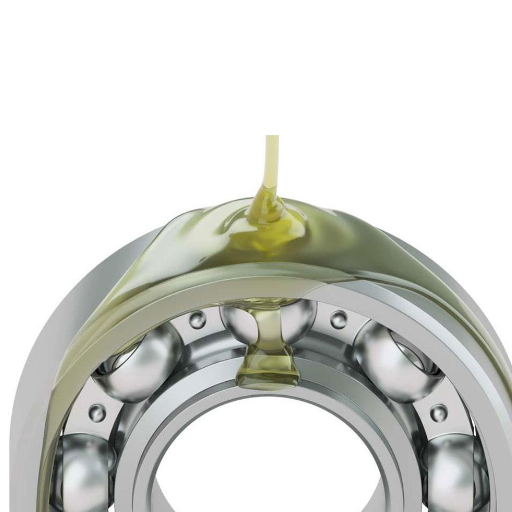
Recognizing contamination issues in oil-lubricated bearings
Contamination presents a serious challenge that can bring forth the complete failure of oil lubricated bearings, resulting in their collapsing well before achieving the intended service life. Contaminants can be in the form of solid materials such as dirt, wear rubble, and metal particles alongside liquid contaminants like water or any other fluids used in processes. These pollutants breach the lubrication barrier, leading to rubbing of bearing parts, which will lead to deterioration of the system.
Contamination from solid particles can often be pinpointed to poor sealing systems or filthy surroundings, and water contamination can be a result of seal problems or condensation, along with humid operating environments. Looking for evidence of contamination requires regular analysis of used oil through techniques like oil particle counting, spectroscopy-based analysis, and checking the water content. Also, modern condition monitoring systems with sensors that detect the presence of particles and water give real-time data that is very important to commanders, enabling them to act before damage is done.
With proper monitoring measures in place to maintain contamination at the lowest level by controlling the amount of oil used supports the premise that organizations mitigate the negative effects of bearing failures while increasing equipment lifespan, reducing operational expenditures and maintenance time.
How improper oil viscosity leads to bearing failure
The viscosity of oil is critical for the proper operation and service life of the bearings. Viscosity is a measure of how a fluid resists flow, and this greatly determines the lubricant’s capacity to generate a supporting film between the bearing surfaces. Both too high and too low values of oil viscosity compromise the lubrication and increases friction and wear.
Too low oil viscosity leads to a film which does not cover an adequate thickness, leading to unhibited metal-to-metal contact between bearing parts. This mechanical action has severe consequences on surface loss, greatly increases temperature, causes excessive wear, and can lead to failure of the bearing at an early stage. On the other hand, too high viscosity oil creates great resistance to flow and hinders circulation in the bearing system. This poor circulation results in suboptimal lubrication at key points of interaction, hinders the removal of waste heat, and excessive temperatures during operation.
Research shows that incorrect viscosity issues account for over 80 percent of lubrication related bearing failures. Mitigating these risks makes advanced monitoring systems that track the lubricant’s viscosity in real-time indispensable. They capture changes outside the desired viscosity windows early enough to allow timely corrective action to be taken concerning the lubrication schedule. Therefore, viscosity control is one of the primary components of a successful maintenance plan designed to automate equipment downtime while optimizing bearing performance throughout their lifespan.
Troubleshooting oil lubrication system problems
To effectively identify and fix problems with an oil lubrication system, having a strategy is essential. Some of the challenges that are most commonly found are contaminated oil, insufficient oil flow, and unsteady pressure levels. Oil contamination results from the entrance of water, particulates, and other substances, which lead to abrasive wear and corrosive damage. For this reason, oil filtration systems are necessary, and regular oil sampling must be done to remove damaging contaminants.
Another highly common issue is insufficient flow of lubrication which may be a result of clogged lines or malfunctioning pumps. Clogged or improperly calibrated pumps often lead to blockages of flow lines. Performance with the manufacturer’s specifications must also be checked. Additionally, more advanced sensors and system diagnostics have become widespread and are needed to monitor pressure levels with pinpoint accuracy. Air leaks, degraded seals, and system expansion are examples of inaccurate pressure monitoring.
Lastly, ensuring OEM-recommended oil system maintenance procedures are followed, as well as implementing a data-driven maintenance approach such as real-time oil quality monitoring, provides valuable insights into the system’s performance. These systems provide for enhanced design margins by reducing the risk of unanticipated failures through predictive maintenance that sets forth control strategies based on system conditions. By overcoming these challenges using technology, operators can improve reliability, increase durability, and enhance trust in their oil lubrication systems.
How does oil lubrication differ from grease lubrication?
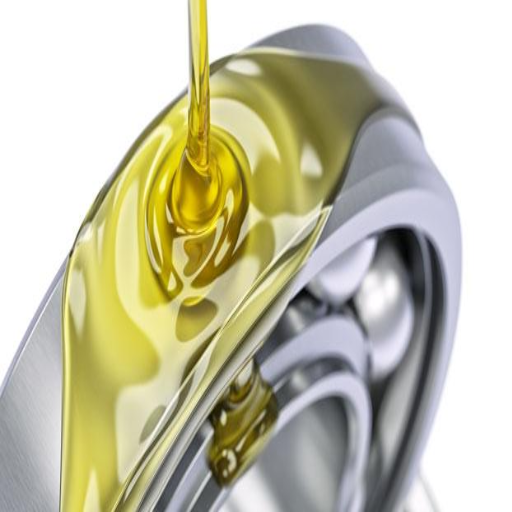
Comparing the lubricating properties of grease and oil
Both grease and oil have different functions, which makes them more suitable for different applications depending on the operating needs. As a result, oils that are more liquid do tend to work better with turbines and engines, as well as other types of automotive machinery, because they do contain base oils with various additives, which allow them to flow at high speeds. Moreover, flowable oils also reduce friction and heat in dynamic systems by flushing out heat, contamination and providing proper heat dissipation.
Grease, on the other hand, has thickening properties because of lithium, calcium, or aluminum complex, which gives it a semi-solid state. This is what makes grease ideal for mechanisms that are constantly exposed to dirt or require unbroken lubrication, such as bearings and gear assemblies. Because grease tends to have better adhesion properties, it works better in areas where there’s movement, such as gear assemblies situated in exposed environments.
Both of these lubricants oil and grease have unique semi-solid and solid characteristics that aid in macrophage infiltration by permitting the oil to integrate easily without significant hindrance. Certain factors should be taken into concerns such as the shift of the load, the powerful force, change in speed and the surroundings.
When to switch between grease and oil lubrication
Considered processes for the decision between oil or grease lubrication can be defined as the need that results from the application, operating location, and environment, and how the performance results are demanded. Operating under moderate to heavy loads, low speeds, or sealable systems are easily preferred with grease due to its semi-solid and able to mitigate the ingress of dust and water. Conversely, oil lubricated systems are favorable where high speeds are the norm, heat removal is mandatory, or where cooling is essential because of the viscosity and wide range of liquid phase of oil.
The increase or decrease in the operational temperature range is a key reason for switching lubrication methods, with oil functioning better in high-temperature scenarios, and grease in extreme cold or areas where containing grease leakage is critical. The body shape of the components can also serve as another reason. For example, complex systems with narrow lubrication paths can greatly benefit from oil circulation, while more simplified applications are better served with the use of grease, such as sealed or self-contained systems.. Maintenance and accessibility also play a role because adhering to an oil system usually means active monitoring and filtration, while using grease lowers the maintenance frequency in enclosed systems.
Hybrid techniques like semi-fluid grease, which can be fluid under certain circumstances but sticky for binder tasks, create new possibilities, blurring the united boundaries of traditional grease and oil approaches. The ratio and volume of oil used relative to the age and environmental conditions the machine faces determines the moment the fluid dynamic characteristics of oil surpass the resilient characteristics of grease, making careful assessment crucial.
Cost and maintenance differences between lubrication types
The maintenance costs and practices involved differ with the type of lubrication selected. This includes other factors like composition, application, and operating conditions. Semi-solid lubricants such as grease have a higher initial cost compared to oil due to the additives and thickeners used. Yet, in high-pressure or vertically oriented systems, the ability to maintain the lubricant in position reduces the need to add more lubricant, resulting in lower maintenance in some cases. However, in general, oil is cheaper but has higher ongoing maintenance costs due to the frequent required evaporation, contamination, and leakage monitoring.
Grease outperforms other types of lubrication in applications that use sealed systems with a higher likelihood of contamination simply because of its effectiveness in contaminant isolation. Additionally, oil-based systems are much better at controlling temperature and friction, especially in high-speed applications, however, they require other complex systems such as filters and pumps to maintain smooth optimal functioning.
Further differentiating lubricants is the use of modern technologies like synthetic lubricants. Though synthetic oils and greases tend to be more expensive initially, their prolonged life, improved thermal stability, and reduced environmental damage make them economical in the long run for critical applications. Ultimately, the choice of lubrication types should be based on an elaborate cost-benefit analysis aimed at maximizing operational efficiency and minimizing lifecycle costs, taking the prevailing physical factors, machine details, and anticipated workload into account.
Frequently Asked Questions (FAQs)
Q: What makes ball bearings precision, and why is oil lubrication important?
A: Ball bearings achieve precision through exacting manufacturing tolerances, superior materials, and perfect sphericity of the balls. Oil lubrication is critical for these bearings as it creates a microscopic lubricating film between rolling elements and raceways, reducing friction and wear. Unlike grease, oil can more effectively dissipate heat, which is essential for high-speed applications. The proper lubricating oil also prevents metal-to-metal contact within the bearing, extends bearing life significantly, and helps maintain the precision tolerances these bearings are designed to deliver.
Q: What type of lubrication is best for high-speed precision bearings?
A: For high-speed precision bearings, circulating oil and oil mist lubrication are generally superior options. Circulating systems use an oil pump to ensure a constant supply of fresh, filtered oil is supplied to the bearing, effectively removing heat. Oil mist lubrication delivers precisely controlled small oil droplets carried by compressed air, ideal for high-speed applications where a large amount of oil would cause churning losses. The selection depends on factors including speed, load, temperature, and bearing size. For extremely high speeds, minimal quantity lubrication with carefully controlled oil mist provides adequate lubrication while minimizing excess oil that could increase bearing operating temperature.
Q: How does lubricating oil affect the performance of roller bearings?
A: Lubricating oil significantly impacts roller bearing performance by creating a critical separation between rolling elements and raceways. This reduces friction, prevents wear, and dissipates heat. The viscosity of the base oil must match the bearing’s operating speed and temperature—too thick causes energy losses and heating, while too thin won’t adequately separate surfaces. Oil also protects against corrosion, flushes away contaminants, and transfers heat away from the bearing. Properly selected oil can extend bearing life by 3-5 times compared to improper lubrication, while also reducing energy consumption, noise, and vibration levels.
Q: What determines the optimal lubrication interval for precision bearings?
A: The optimal lubrication interval for precision bearings depends on several factors, including operating temperature, speed, load, environment, and the specific lubricant properties. Higher temperatures accelerate oil degradation and may require more frequent lubrication. Speed factors are critical—bearings operating at high speeds may need more frequent oil replenishment due to increased oil consumption and potential churning. Heavy loads create thinner oil films, potentially necessitating shorter intervals. Contaminated environments require more frequent lubrication to flush contaminants. The base oil viscosity and additive package also influence interval length. Most manufacturers provide recommended lubrication intervals based on bearing type and operating conditions.
Q: How do oil ring and oil mist lubrication systems differ?
A: Oil ring lubrication uses a loose ring that rides on the shaft and dips into an oil reservoir, carrying oil to the bearing through rotation. This method is self-regulating, mechanically simple, and requires no external power, making it reliable for moderate-speed applications. Oil mist lubrication, conversely, atomizes oil into fine particles carried by compressed air directly to the bearing. It provides precisely controlled minimal quantities of oil, making it ideal for high-speed applications where excess oil would cause churning and heating. Oil mist systems require compressed air infrastructure and a more complex setup but deliver superior cooling and can extend bearing life in high-speed applications while minimizing oil consumption.
Q: What role does base oil viscosity play in precision bearing performance?
A: Base oil viscosity is crucial for precision bearing performance as it determines the oil’s ability to form an adequate lubricating film under specific operating conditions. Higher viscosity oils create thicker films that better separate bearing surfaces under heavy loads or lower speeds, while lower viscosity oils reduce friction and heat generation at higher speeds. The correct viscosity ensures the bearing maintains optimal pressure in the bearing contact areas without excessive energy losses from fluid friction. Temperature significantly affects viscosity—oils thin as temperatures rise—so the viscosity must be selected based on actual operating temperatures. Many bearing failures can be traced to improper base oil viscosity selection, making it one of the most critical aspects of selecting the right lubricant.
Q: How can excess oil affect ball bearing performance?
A: Excess oil in a ball bearing system can significantly impair performance through several mechanisms. First, it creates churning and drag as the bearing elements must constantly displace the oil, increasing energy consumption and operating temperatures. This additional heat can accelerate oil degradation and reduce bearing life. Excess oil can also cause leakage, creating contamination issues and potentially compromising nearby components. In high-speed applications, excessive oil quantity leads to turbulence, causing the bearing to run hotter rather than cooler. Additionally, overfilling can increase pressure within the bearing housing, potentially damaging seals. For optimal performance, precision bearings typically require only a small, precisely controlled amount of oil that can form the necessary lubricating film without excess.
Q: What are the key differences between splash oil lubrication and jet lubrication methods?
A: Splash oil lubrication relies on bearing components or dedicated splashers partially immersed in an oil bath to distribute oil throughout the bearing housing. It’s simple, cost-effective, and suitable for moderate speeds and loads. However, it provides limited cooling and filtration capabilities. Jet lubrication, conversely, uses an oil pump to direct pressurized oil streams precisely at the bearing through nozzles. This method offers superior cooling, particularly for high-speed applications, as fresh oil is constantly supplied to the bearing. Jet lubrication allows for oil filtration, heat exchangers in the circulation system, and precise control of the quantity of oil delivered. While more complex and expensive to implement, jet lubrication generally provides better bearing life in demanding applications where heat removal is critical.
Q: How does bearing maintenance differ with oil versus grease lubrication?
A: Oil lubrication requires more frequent maintenance than grease lubrication, but offers advantages for precision applications. Oil systems need regular monitoring of oil levels, quality, and contamination, and may require scheduled oil changes based on operating conditions rather than fixed time intervals. Circulation systems require filter changes and pump maintenance. In contrast, grease-lubricated bearings often use “lubricated for life” designs or need regreasing at much longer intervals, as grease clings to bearing surfaces rather than flowing away. Grease life is generally longer than oil service life in similar conditions, but grease degradation is harder to monitor without specialized analysis. Oil systems allow for easier contamination control through filtration and provide better indication of bearing condition through oil analysis, making them preferred for critical high-value applications despite higher maintenance requirements.
UCTH213-40J-300 with Setscrew(inch)
CNSORDERNO: Normal-duty(2)
TOGN: UCTH213-40J-300
SDI: B-R1/8
SD: 2 1/2
UCTH212-39J-300 with Setscrew(inch)
CNSORDERNO: Normal-duty(2)
TOGN: UCTH212-39J-300
SDI: B-R1/8
SD: 2 7/16
UCTH212-38J-300 with Setscrew(inch)
CNSORDERNO: Normal-duty(2)
TOGN: UCTH212-38J-300
SDI: B-R1/8
SD: 2 3/8
UCTH212-36J-300 with Setscrew(inch)
CNSORDERNO: Normal-duty(2)
TOGN: UCTH212-36J-300
SDI: B-R1/8
SD: 2 1/4
UCTH211-35J-300 with Setscrew(inch)
CNSORDERNO: Normal-duty(2)
TOGN: UCTH211-35J-300
SDI: B-R1/8
SD: 2 3/16
UCTH211-34J-300 with Setscrew(inch)
CNSORDERNO: Normal-duty(2)
TOGN: UCTH211-34J-300
SDI: B-R1/8
SD: 2 1/8










